George Cook And The Soldiers’ And Sailors’ Monument, Dedicated In 1891
The story behind George Cook and his wife, Adeline Granger Cook, gifting the city of Watertown its soldiers’ and sailors’ monument in 1891 is a remarkable one given George’s personal history and the fact he wasn’t a native of the area. George and Adeline, who were raised in Jefferson County, settled in Watertown in 1873 after George had retired. For the remainder of their lives, they continued their charitable and philanthropic ways, with George amongst the wealthiest citizens of Watertown, having operated his own business while investing wisely in the New York Central and other railroads across the midwest.

One needs to look no further than George’s early life to appreciate the person he was and the lives he touched. Born in 1814, George Cook and his family saw a number of tragedies strike while he was between the ages of 16 and 19. George lost both parents, a brother, and a sister. As a young man in Homer, N. Y., not yet twenty, he also had five siblings still alive, the youngest not yet 6, all of whom faced an uncertain future.
Having married early in life, George worked tirelessly alongside his wife to provide for his remaining siblings, keep them from being separated, and ensure they were well-educated. The Times reported in his obituary on Feb. 4, 1901, with regards to his parents’ death—
A conference of relatives was held, and they decided that it would be best to separate the children and give them into the care of various relatives. Mr. Cook, a young man just starting in business life, vetoed this plan and assumed himself the responsibility of caring for the family, declaring: “So long as I have two hands this family shall remain unbroken.”

George and Adeline saw that George’s siblings were raised appropriately all the way through their formal educations and until they gained employment and could stand and contribute to society on their own. In fact, the siblings were the closest thing George and Adeline would come to having children of their own.
A number of years after retiring from his own mercantile business and years of investments, George and Adeline came to Watertown in 1873, where they would later reside at 57 Washington Street. It’s not clear whether they built the 5,000 sq. ft. Victorian mansion that once graced the corner of Washington Street and Keyes Ave, later renumbered to 431 in 1908, but very possible since it was constructed in 1876. Many may recall the old “off-peach” colored dilapidated building that was condemned and razed back in 2015, its better days long behind it.

The Soldiers’ and Sailors’ Monument
The idea for the soldiers’ and sailors’ monument first began in earnest with The Times’ involvement on May 31, 1889. As often was the case, The Times started a subscription to raise funds. Some time afterward, Mr. Cook approached The Times and asked to suspend their subscription for him to work on a proposition. Less than a month later, George Cook appeared at a special meeting of Joe Spratt post, No. 323, Grand Army of the Republic (G. A. R.), and gave them his proposition to erect the monument at the cost of $10,000, with the condition that the city provide a location and foundation for the plan drawn up by architect J. W. Carpenter, Jr., of Detroit.
George Cook’s involvement was actually spurred by the recent death of his brother, Albert Cook, in which $5,000 was devoted to erecting a soldiers’ monument in Seneca Falls, with his widow and daughter contributing $5,000 more. George happened to be present on the day of its unveiling on Decoration Day, 1889, about the time in which The Times started their subscription drive to have a similar monument constructed for Jefferson County.

On the day of the dedication of the placing of the cornerstone, Memorial Day, 1890, Col. A. D. Shaw, as told in John A. Haddock’s Growth of a Century, remarks included—
The American Revolution was an age of national formation, and our last great struggle marked a second and even more perilous age of national preservation. In both eras, volunteers were the heroes of the hour. The volunteers were the heroes of the Revolution was a new type of patriot in our new world.
The pent-up love of liberty that led our puritan forefathers to seek a new home on the far away shores of an unknown continent, furnished inspirations to duty and sacrifices as noble as they were manly and lofty. The sentiment of duty that finally made the Revolution a success, proved that the moral forces of our ancestors were pure and strong, and that the blood of ages of manly hopes and deeds had found a home on our soil.
The second age of our national preservation brought out in large measure the commanding wealth of our national patriotism. Again the American volunteer hastened to the front to protect and defend the great inheritance that had come down to him, hallowed by so many holy memories, and consecrated by the blood of immortal patriots. In both periods of supreme trial the American volunteer faced the battle line with a courage as undaunted, a spirit as heroic, and a patriotism as pure as ever filled the breasts of Hampden or of Richard the Lion Heart in the old world.

In its article detailing the monument’s unveiling, The Times wrote of it—
The base is a solid block of granite 12 feet square. A second base is ten feet square. Upon this rests the die, a solid block of granite six feet in height and thickness, and upon this the shaft rests, the first section being octagon in shape, surmounted by a projecting cap, upon which rests a round shaft surmounted with a beautiful statue of Victory.
This figure is of heroic size, seven feet and one-half in height, of the finest workmanship. The monument is flanked by two burnished figures, one of a sailor at rest after action and one of a soldier at parade rest. The monument is mounted five feet above the grade of the street and its total height is 55 feet above the street level. Its cost is over $10,000.

The night prior to its unveiling, the soldiers’ and sailors’ monument was covered by a garment formed of several large United States flags fastened together. The principal flag was purchased by 12 citizens of Watertown in 1860, of which there was only one remaining, and was 36 feet long and said to have been the largest flag in the state at the time.
Thousands descended upon Public Square to witness the unveiling, with visitors coming from other posts, including Lowville, to represent Lewis County. The square and adjacent streets were said to have been thronged, as The Times reported on the scene—
The thousands who were on the square witnessed a scene of military drill that will leave its impression for years upon their memories. The youthful militiamen of the 39th Separate company, stepping to the regular beat of the drum, and every movement in accordance with the strictest military tactics, followed the two hundred splendidly disciplined regular government troops from Madison Barracks at Sackets Harbor. Though not of long service, their training under the captain of the company had been sufficient to attract the proud attention of hundreds of their friends and many strangers.

As the speaker, Mr. Morse, a friend of the Cooks, paused before the unveiling—
The trembling hands of Mr. and Mrs. George Cook united in the pressure on the cord controlling the covering, which immediately responded to their touch and fell in graceful folds at the base.
The act was greeted by a united cheer which rang out clear and strong from thousands of throats as the great host gazed in enthusiastic admiration upon the grand memorial which stood revealed.
“Gentlemen of the corporation, citizens of Watertown, the monument is yours, yours to treasure and with all for which it stands preserve.”
Upon Mrs. Cook’s death in July of 1898, the G. A. R., for the first time in its history in the city of Watertown, had members of its post attend a funeral for anyone outside of the order. The exception was made, passed as resolutions, citing Mrs. Cook’s long-standing charitable actions and the appreciative patriotism that inspired her and her husband to provide the city with “the beautiful monument which fittingly adorns our Public Square, as an object lesson for future generations.”

For Memorial Day, 1900, The Times remarked it to be one of the finest parades ever seen here and one that paid tribute to George Cook—
The parade marched up Washington Street to Stone, countermarching and proceeding to Public Square, around the monument, where it halted. The committee then decorated the monument, while the troops presented arms and veterans uncovered. The parade then again started, passing in front of the Woodruff toward Arsenal Street, filing left at the American corner and marching up Washington and over the route announced to the corner of Washington and Ten Eyck, where the 39th opened ranks, allowing the post to pass through to the residence of George Cook, where a committee presented the donor of the monument with flowers and congratulations.
At Mr. Cook’s residence Gen. Winslow and O. B. Cadwell called upon him for the post. The veterans saluted, Mr. Cook returning it from the window.
The parade then re-formed. Joe Spratt post returned to headquarters, where they were dismissed, but the 39th and Spanish war veterans, with Canton Ridgley as invited guests, marched to Brookside, where the usual impressive military service was held for the company’s dead.
It was a fitting Tribute as it would be the last Memorial Day George Cook would observe, having passed away in early February of 1901 at the age of 86. The Times made note of Mr. Cook’s acts of kindness, writing—
Some few of Mr. Cook’s act’s of charity and philanthropy were known to his friends and townsmen; many more were known only to himself and the persons they benefited. One of Mr. Cook’s lifelong friends has said: “We never can count the uplifted hands of those who have been blessed by his thoughtful and generous aid in time of need, but we do know that of all his gains, his family, his friends and needy had their full share.”
In his will, George Cook left a total of $20,000 to public, religious and philanthropic institutions in Watertown, including $5,000 to the City Hospital, $5,000 for the Jefferson County Orphan’s home, $5,000 to the First Presbyterian Church to be used for Hope Presbyterian Church, and $5,000 to the First Presbyterian Church for use with the Boon Street mission.
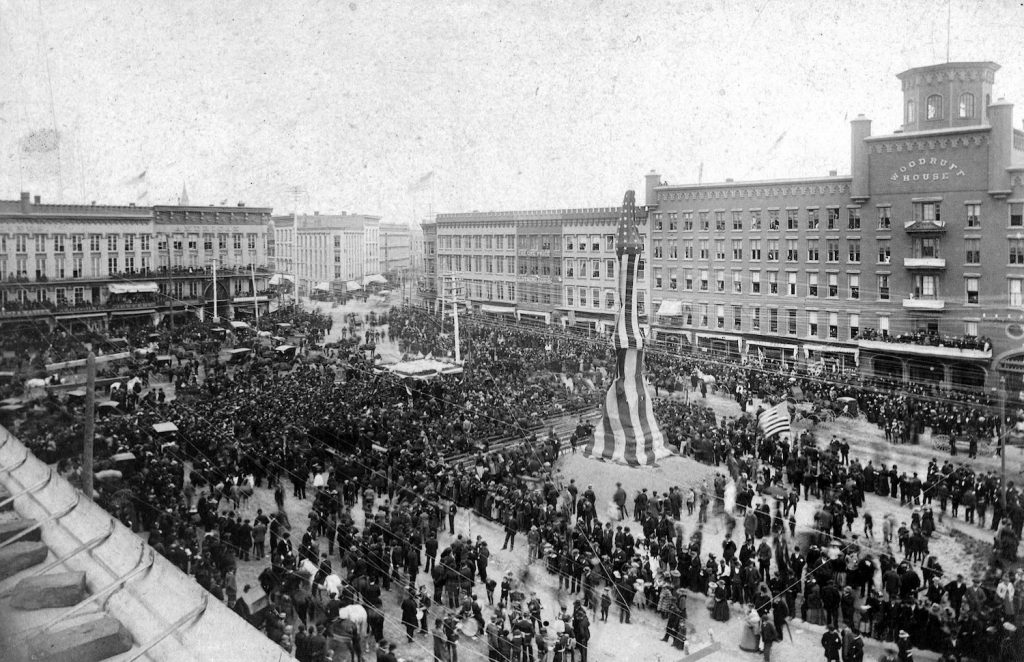
The Soldiers’ And Sailors’ Monument Inscriptions
“Mr. And Mrs. George Cooks’ Memorial.
In Grateful Memory Of The Soldiers And Sailors Of Jefferson County Who Fought Or Fell In Defense Of The Union And The Freedom Of Man.”
“This monument to witness that these dead have not died in vain, and that, through them, under God, this Nation has a new birth of freedom.”
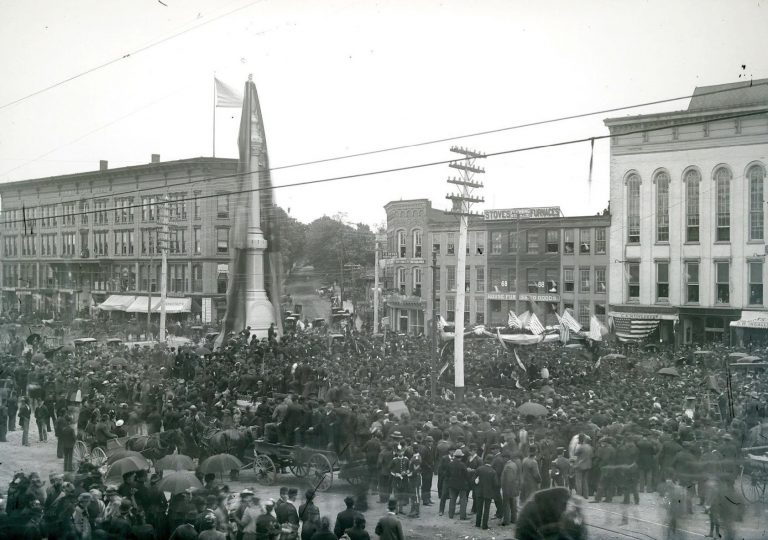
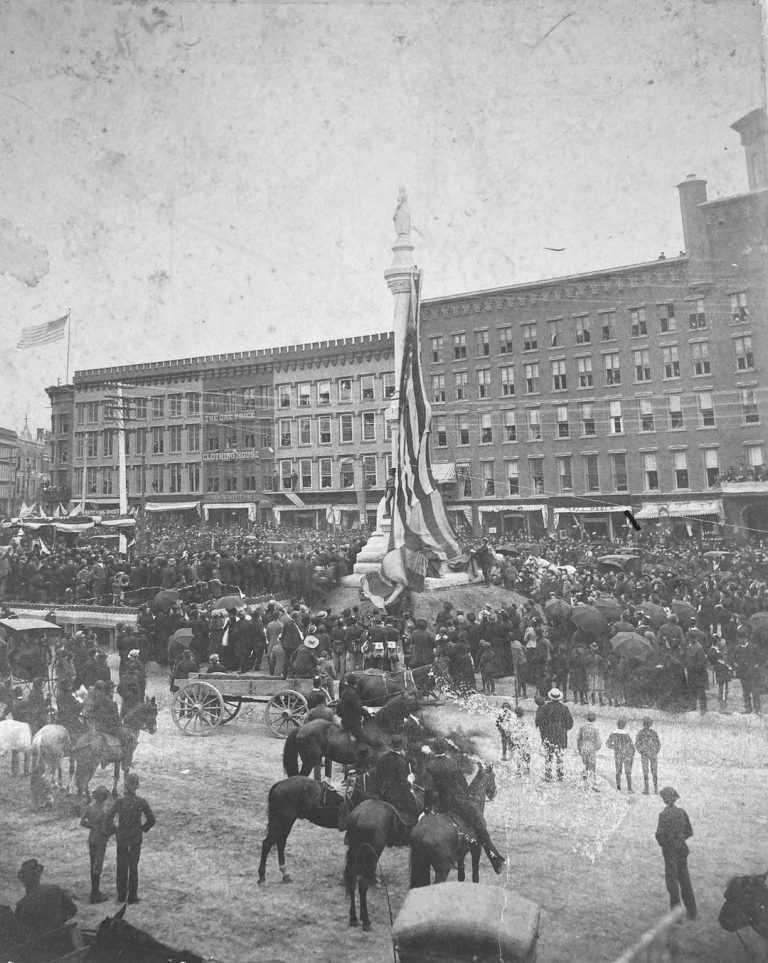

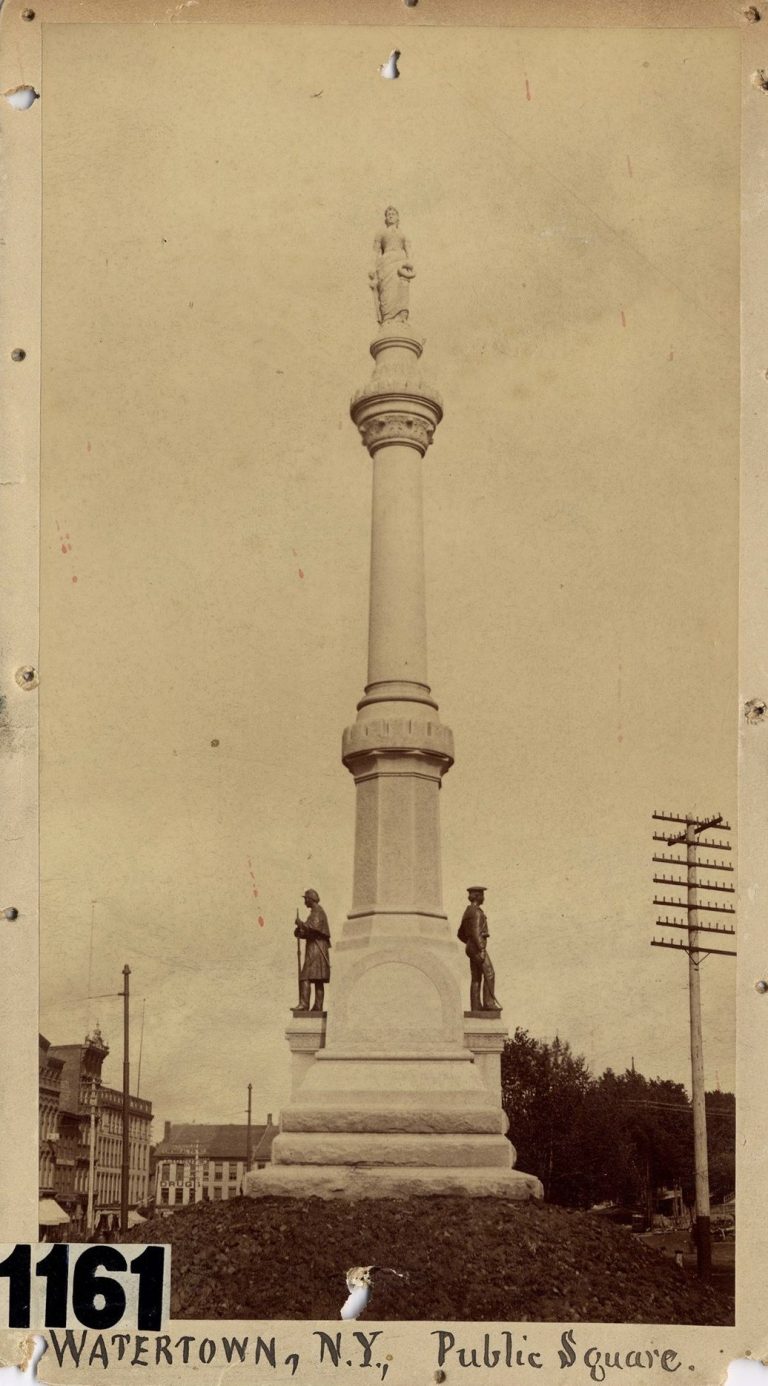



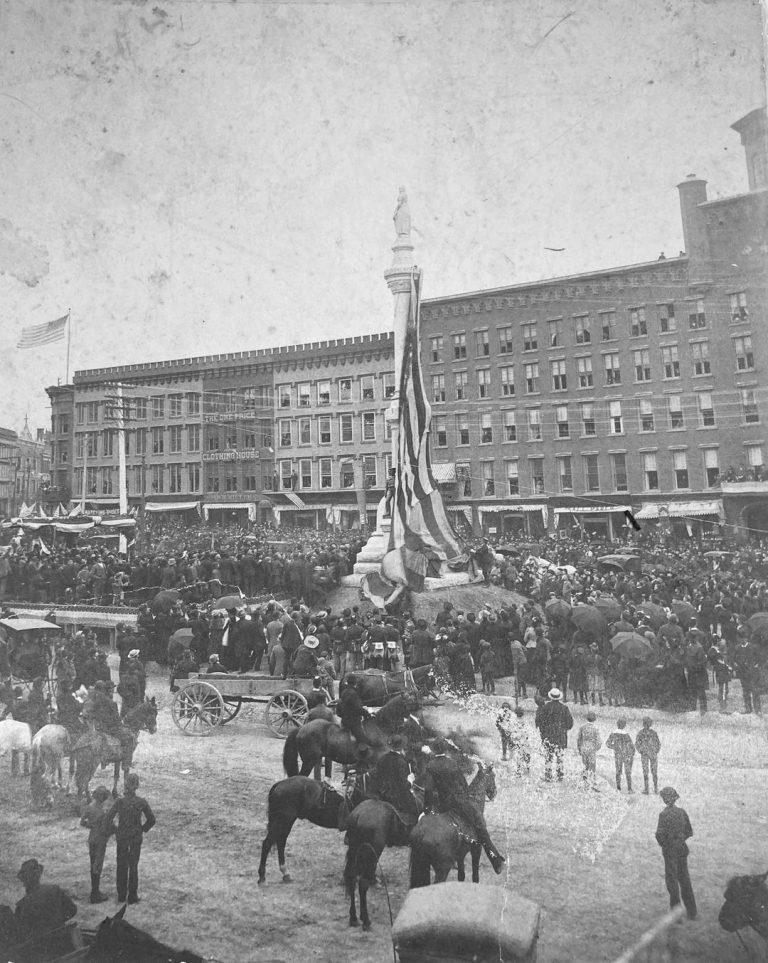

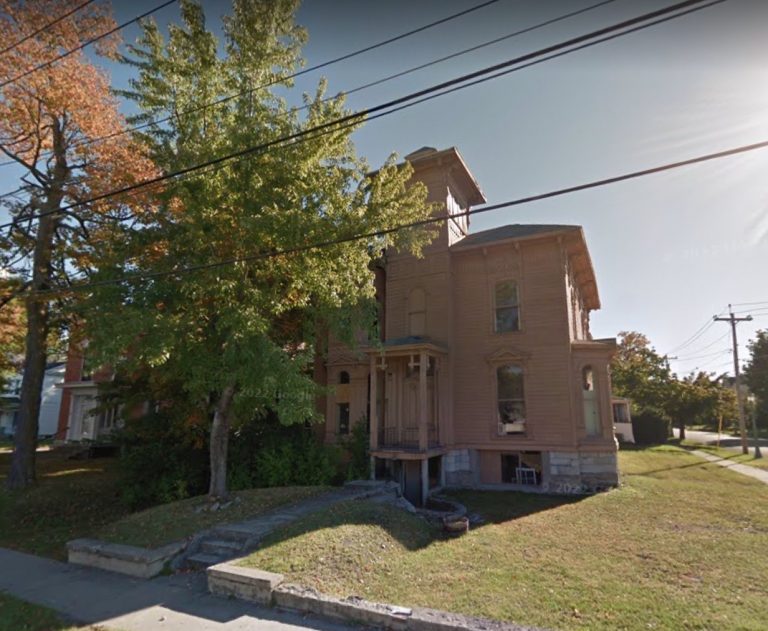
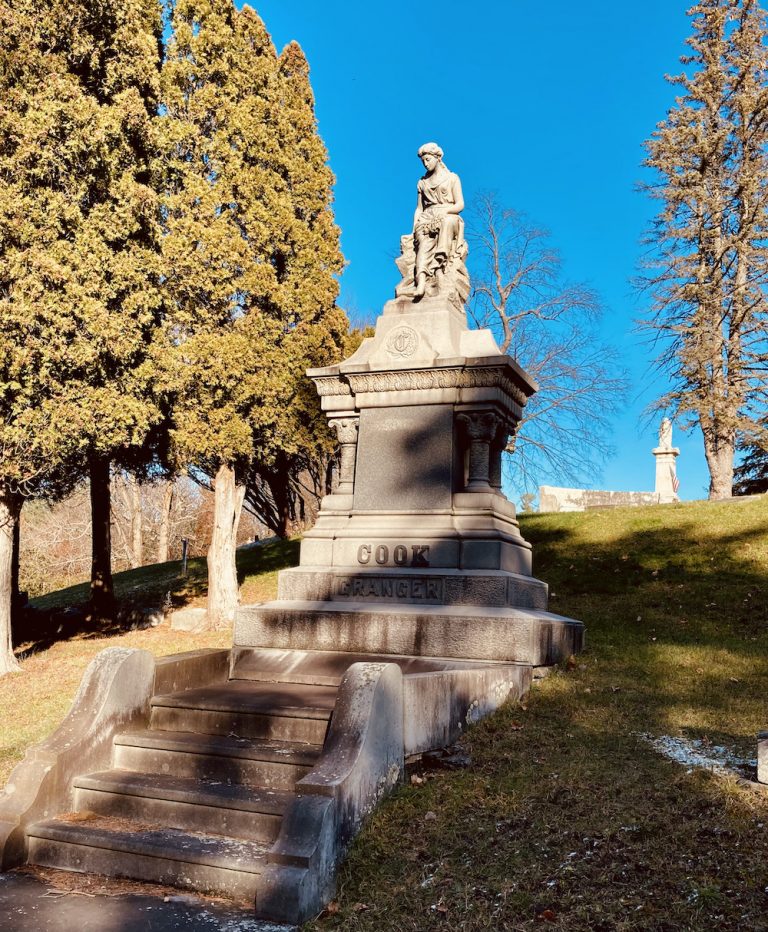

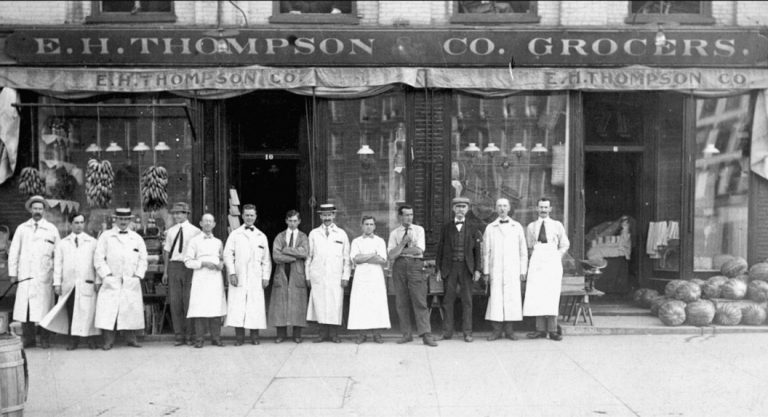






1 Reviews on “George Cook And The Soldiers' And Sailors' Monument (est. 1891)”
Patrick Phillips donated the base of this monument.